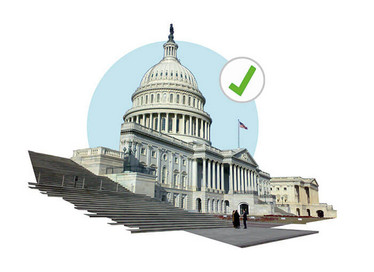Safe Passage for Cures
The 21st Century Cures Act is passed through US Congress – and includes big plans for the FDA
The US’s 21st Century Cures Act has been in development since April 2014 – and on December 6, 2016, the Act was finally passed by the Senate in an 85-13 landslide vote. Having already passed through the House of Representatives a week earlier, the bill – which has the Obama administration’s support – will become law after being rubber-stamped by the President.

In the July 2015 issue of The Medicine Maker, we discussed the potential implications of an earlier draft of the bill (1). Garrett Davis, now a former research associate at Best Practices LLC, said, “Even if just 10 percent of the current draft is implemented, it will drastically change how things work in the industry.” It would appear Davis’s requirement has been surpassed – with far reaching changes to the drug approval process being carried through to the final version.
Section 2061 of the bill states, “To support approval of a drug for a new indication, the FDA must evaluate the use of evidence from clinical experience (in place of evidence from clinical trials) and establish a streamlined data review program.” Proponents hope this will speed up the drug development and incorporate so-called “real world evidence”, such as observational studies, patient input, anecdotal data and so on, for approval of new indications for FDA-approved drugs. The Act will also allow drug companies to promote off-label uses to insurance companies, allowing them to expand their markets.
In addition, the US National Institute of Health is also set to get a substantial funding boost of $4.8 billion (although notably less than the $8.75 billion requested in an earlier version of the bill), which will help finance the Obama administration’s three signature programs over the next decade: Cancer Moonshot, the BRAIN Initiative, and the Precision Medicine Initiative.
Other key features of the bill include a quicker path for breakthrough medical technologies for patients with life-threatening or irreversibly debilitating diseases, $1 billion over two years to combat the US’s opioid epidemic, and $500 million dollars for the FDA to implement a whole host of new provisions.
The Cures act has gone through a number of revisions over the last two years, with two main points of contention in the Senate. The Democrats refused to approve the accelerated approval provisions unless additional funding for the FDA and the National Institutes of Health were included, while the Republicans refused to support the funding without a means of paying for it. Eventually, both sides agreed with certain compromises.
The bill, however, hasn’t been passed without controversy over the new emphasis on “real world evidence”. Critics of the bill have suggested that it signals a move away from clinical evidence, potentially changing the meaning of “FDA approved,” which they say assures safety, efficacy and security (2).
- S Sutton, “Countdown to Cures”, The Medicine Maker, 6 (2015). Available at: bit.ly/2gkoiUJ.
- STAT, “21st Century Cures Act FDA approval”, (2016). Available at: bit.ly/2gKf2KR. Last accessed December 7, 2016.

Over the course of my Biomedical Sciences degree it dawned on me that my goal of becoming a scientist didn’t quite mesh with my lack of affinity for lab work. Thinking on my decision to pursue biology rather than English at age 15 – despite an aptitude for the latter – I realized that science writing was a way to combine what I loved with what I was good at.
From there I set out to gather as much freelancing experience as I could, spending 2 years developing scientific content for International Innovation, before completing an MSc in Science Communication. After gaining invaluable experience in supporting the communications efforts of CERN and IN-PART, I joined Texere – where I am focused on producing consistently engaging, cutting-edge and innovative content for our specialist audiences around the world.



















